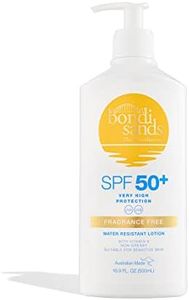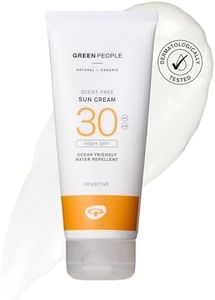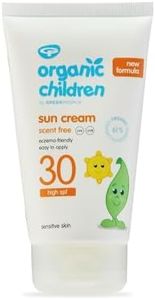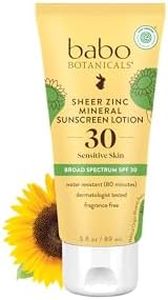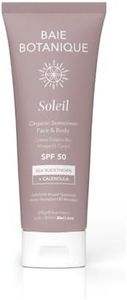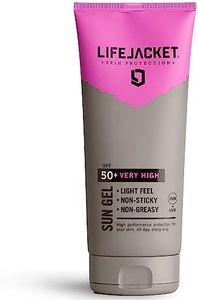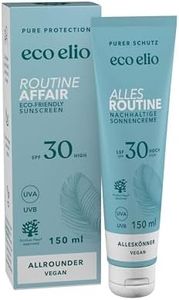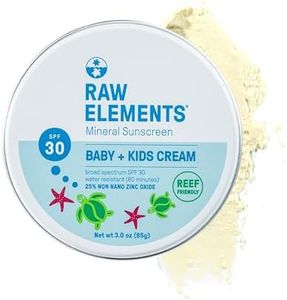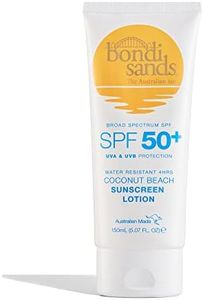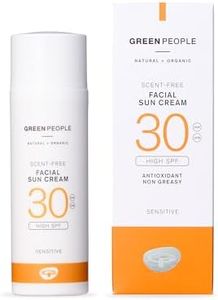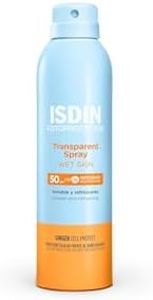We Use CookiesWe use cookies to enhance the security, performance,
functionality and for analytical and promotional activities. By continuing to browse this site you
are agreeing to our privacy policy
10 Best Chemical Free Sunscreen
From leading brands and best sellers available on the web.Buying Guide for the Best Chemical Free Sunscreen
Choosing the right chemical-free sunscreen is essential for protecting your skin from harmful UV rays while avoiding potentially irritating or harmful chemicals. Chemical-free sunscreens, also known as mineral or physical sunscreens, use natural minerals like zinc oxide or titanium dioxide to block the sun's rays. When selecting a chemical-free sunscreen, it's important to consider several key specifications to ensure you get the best product for your skin type and lifestyle needs.SPF (Sun Protection Factor)SPF measures the level of protection a sunscreen offers against UVB rays, which are responsible for sunburn. Higher SPF values provide more protection. For everyday use, an SPF of 30 is generally sufficient, offering about 97% protection against UVB rays. For extended outdoor activities, consider SPF 50 or higher. Choose an SPF based on your sun exposure and skin sensitivity.
Active IngredientsChemical-free sunscreens typically use zinc oxide and/or titanium dioxide as active ingredients. These minerals sit on top of the skin and physically block UV rays. Zinc oxide offers broad-spectrum protection against both UVA and UVB rays, while titanium dioxide primarily protects against UVB and some UVA rays. For the best protection, look for sunscreens that contain both ingredients or a higher concentration of zinc oxide.
Broad-Spectrum ProtectionBroad-spectrum sunscreens protect against both UVA and UVB rays. UVA rays can prematurely age the skin, causing wrinkles and age spots, while UVB rays can burn the skin. Both types of rays can contribute to skin cancer. Ensure the sunscreen you choose is labeled as 'broad-spectrum' to provide comprehensive protection.
Water ResistanceWater-resistant sunscreens maintain their SPF protection for a certain amount of time while swimming or sweating. They are typically labeled as 'water-resistant' for either 40 or 80 minutes. If you plan to swim or engage in activities that cause sweating, choose a water-resistant sunscreen and reapply it as directed.
FormulationChemical-free sunscreens come in various formulations, including lotions, creams, sticks, and sprays. Lotions and creams are generally more moisturizing and easier to apply evenly, making them suitable for dry or sensitive skin. Sticks are convenient for targeted application, such as on the face. Sprays offer quick application but may require more careful application to ensure even coverage. Choose a formulation that fits your application preference and skin type.
Skin Type CompatibilityDifferent sunscreens are formulated for different skin types. If you have sensitive skin, look for sunscreens labeled as 'hypoallergenic' or 'for sensitive skin.' For oily or acne-prone skin, choose a non-comedogenic sunscreen that won't clog pores. Dry skin may benefit from sunscreens with added moisturizers. Consider your skin type to find a sunscreen that will be comfortable and effective for you.
Tinted vs. Non-TintedTinted sunscreens contain pigments that can help even out skin tone and reduce the white cast that some mineral sunscreens leave on the skin. Non-tinted sunscreens are colorless and may be preferable if you do not want any additional color on your skin. Choose based on your preference for appearance and whether you want additional cosmetic benefits.
